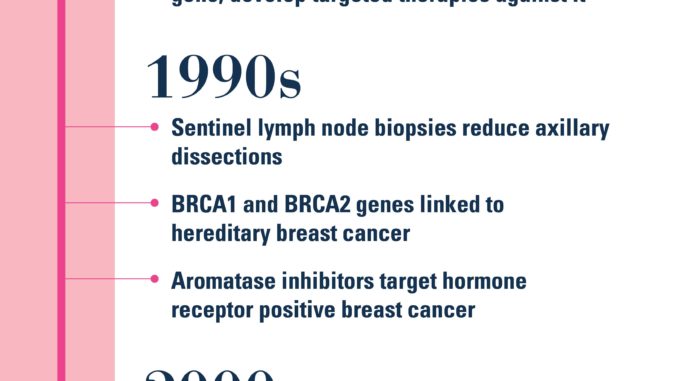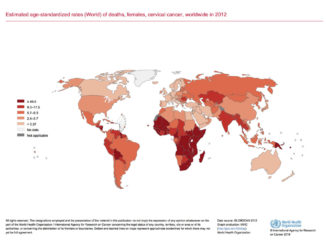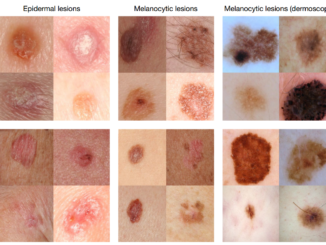
The latest advanced therapies can be an alternative to traditional therapies for breast cancer patients. These therapies are Cryosurgical Ablation (CSA), Seed Knife Therapy (Brachytherapy), Percutaneous Ablation, Combined Immunotherapy and Targeted Chemotherapy.
1. Cryosurgical Ablation (CSA):
Cryosurgery is an important ablation technique for tumors. It destroys tumors by cycles of freezing and thawing. Cryosurgery’s destructive effects on tumors are due to two major mechanisms, one immediate, the other delayed. The immediate mechanism is the damaging effect of freezing and thawing the cells. The delayed mechanism is the progressive failure of microcirculation; ultimately, vascular stasis becomes operative as an important cause of tumor tissue destruction. Once the temperature falls below -40oC, ice crystals may form within the cells. Once it occurs, cell death is almost certain. During cryosurgery, progressive failure of microcirculation occurs due to a cascade of events: endothelial layer destruction causing vessel walls to become porous, interstitial edema, platelet aggregation, microthrombii, and ultimately vascular congestion and obliteration. It was theorized that during cryosurgery, the immune system of the host became sensitized to the tumor being destroyed by the cryosurgery. Any primary tumor tissue undamaged by the cryosurgery and the metastases were destroyed by the immune system after cryosurgery. This response was termed the “cryo-immunological response”.
2. Seed Knife Therapy (Brachytherapy)
Seed Knife Therapy (Brachytherapy) is used for breast cancer treatment, Seed implantation with iodine-125 or palladium-103 seeds (brachytherapy) is a highly effective treatment for patients with cancer. Brachytherapy requires no surgical incision, offers patients a shorter recovery time, and has less chance of troubling side effects. For example, for prostate cancer, brachytherapy is an outpatient procedure and most patients go home the same day as their treatment. They can also return to their normal activities a few days after treatment. Seed implantation takes only 45 minutes to 1 hour. Seed implantation with iodine-125 seed gives a lower dose rate of radiation than palladium-103. Because iodine-125 works in your body longer than palladium-103, it is ideal for treating slow growing tumors such as most prostate cancers. The 125 iodine seeds-which have a half -life of 59 days-release a short-course of gamma ray. The seeds implanted into cancerous masses and nearby tissue radiate targeted cells and ultimately destroy cancer. This prevents unnecessarily exposing the whole body to radiation.
3. Percutaneous Ablation
Thermal injury to cells begins at 42? Only 8 minutes at 46? Is needed to kill malignant cells, and 51? Can be lethal after only 2 minutes. At temperatures above 60? Intracellular proteins are denatured (killed) rapidly, cell membranes are destroyed through dissolution and the melting of lipid bilayers, and lastly, cell death is inevitable. Radiofrequency ablation (RFA) is a new technique for treating tumors localized to certain organs. A needle electrode is advanced into the targeted tumors via either a percutaneous, laparoscopic, or open (operation) route. The RF energy causes the tissue around the tip of the probe to heat up to a high temperature above which cells break apart and die. For eradication of all cancerous cells, the goal is to place the probes so that they destroy the entire tumor plus an adequate “rim” of non-cancerous tissue around it.
4. Combined Immunotherapy
Immunotherapy, also known as CIC-combined immunotherapy for cancer-has increasingly become the focus for cancer researchers. The past 10 years have seen an increased understanding of immuno-surveillance and appreciation of the mechanisms by which tumors escape its notice. This has led to the development of promising new strategies against cancer, such as immunotherapy, which is focused on increasing of the body’s natural immune functions against cancer cells.
5. Targeted Chemotherapy
Targeted Chemotherapy is can be an alternative as it leaves minimal side effect as compared to traditional chemotherapy. Targeted therapies are drugs or other substances designed to block the growth and spread of cancer by preventing cancer cells from dividing or by destroying them directly. While standard chemotherapy affects all cells in the body, targeted therapy directs drugs or other specially created substances (e.g., immune system proteins developed in the lab) to attack cancer cells. The goal of targeted therapy is to interfere with genes or proteins involved in tumor growth to block the spread of the disease.
By targeting specific molecules that are responsible for the growth, progression and spread of cancer, targeted therapy differs from standard chemotherapy, which attacks the disease systemically and, therefore, also damages healthy cells. Because targeted therapy specifically seeks out cancer cells, it is designed to reduce the harm to healthy cells, which may lead to fewer side effects than standard chemotherapy.
Targeted therapies serve as the foundation of precision medicine, which uses information about a tumor’s DNA profile to identify additional treatment options. Tailored treatments target abnormalities that may be found in each tumor’s DNA profile. This innovation marks a shift from traditional treatments designed for the average patient, toward more precise therapies.
Targeted therapy is an evolving science, and not all cancer types may be treated with targeted drugs. Several targeted therapies have been approved by the U.S. Food and Drug Administration for use in cancer treatment, including hormone therapies, signal transduction inhibitors, apoptosis inducers, gene expression modulators, angiogenesis inhibitors and toxin delivery molecules.
Proudly WWW.PONIREVO.COM
by Anup Aboti



